From the uninitiated perspective, there’s a lot of gonzo in fly fishing for musky. From the size of the fish, the teeth, the romanticized struggle, the beefy tackle and oversized flies, few occasions in freshwater fly fishing compare in perceived absurdity–a fact that can be distracting at times. As someone who has had a hand in many anglers’ introduction to hunting musky with flies, I’ve considered it my job to filter the smoke, simplify the process, and educate folks on what truly matters, and what, to that end, can be considered the “right” way to do things without squashing the opportunity for creativity in angling. A large portion of that discussion can be centered around fly design.
At first glance, it may seem that the most important characteristic of a musky fly is size — throw in some mounds of wildly colored bucktail and you’re ready to rock — but following those principles alone can result in heartbreak, a sore shoulder, or both. As is the case for most fly designs, an understanding of the biology of the target species and the demands of the game are the best informants. Following are a few design attributes that should be considered in creating tools that will effectively hook, hold, and land a musky, while standing up to the rigor of their pursuit.
Durability
Musky are sometimes large, heavy critters, always with a powerful jaw full of sharp teeth. They will find the weaknesses in a fly’s construction. Musky flies also tend to be relatively time-consuming to tie. So it’s healthy for your fly box, and for your own time, to tie a durable fly that will survive several fish. This means strong thread tension, well-secured materials, and a generous amount of locking glue or resin, with favor given to durable materials.
Strong connections in articulated flies are critical. The last thing you want is to spend an hour and a half tying a beautiful fly that gets bit, only to have a fish rip it in half on the hookset and swim off freely. The most bulletproof connections are metal shanks tied straight onto a leading hook. Two pieces of doubled-over 40-lb. 7x7 bite wire is another good option. Whatever you use, make sure it can’t slip out of the thread wraps you use to secure it, and when using any kind of stranded wire, it’s always a good idea to inspect them from time to time.

Castability
Fishing for musky can be a war of attrition. It’s a joke, but it's mostly true. You need to be able to make good presentations for as long as possible, and having a fly that allows you to do that is paramount. An effective musky fly portrays bulk without being bulky, and features materials that are light and do a decent job of shedding water. This is why bucktail and the hollow, or reverse, tying technique are hallmarks of the musky fly world.
The addition of weight to a fly should also be limited to what is necessary to the action of the fly and cannot be achieved with a sinking line. Usually this means none at all. Strategic weight can help produce an erratic head kick, or help to overcome the drag that a bulky fly has in the air while casting, but adding weight “to get the fly down” will work against you in most cases.
Hook Choice
Serious thought should be devoted to the actual hooks that you build flies on, for when the moment arrives, they will be your only point of contact with the fish. Effective hooks are sturdy, with a sufficient gap to grab and hold a large fish, and should be proportional to the fly you’re tying. They should also be sharp and easily sharpened (if you’re going to seriously pursue musky, you need to be a hook-sharpening maniac). Some examples that I use with regularity are the Gamakatsu B10S, Ahrex PR320, Daiichi 2461, and Kona BGC and BGH, but there are plenty of other great options.
With more and more “predator-specific” hooks available on the fly tying market today, we have tons of options, but beware of the really heavy gauge hooks, as there’s a point of diminishing returns with beefiness. Musky have hard mouths, and when one eats your fly, you’re going to have to drive a hook through it by strip setting with a fly line (and that’s if you can keep your cool and do that). Really thick hooks require more forceful sets, and are harder to sharpen and keep sharp.

Hook Placement
This is a big one — the first thing I consider when building a fly — and something that will cause me to dismiss a fly at first glance. Musky come equipped with wide, flat mouths full of teeth, which perfectly suits them for their preferred predatory strategy of t-boning soft, fleshy prey at center mass. Studies have proven this to be true, and anecdotally, anglers everywhere will confirm. For that reason, if you can only put one hook in a fly, place it at center mass. If you can or want to use two, place another in the head. A 13-inch fly with a single 2/0 hook in the head is a recipe for heartbreak.
It’s worth mentioning, too, that strategically placed hooks should also be uncrowded by materials and allowed to function properly.

Built-In Triggers
It goes without saying that the goal of any musky fly is to get a fish to eat it, and so it should be tied with some built-in triggers. The majority of proven musky fly designs are erratic and imitate conventional glide baits, preying on a musky’s aforementioned preference for t-boning prey by jackknifing and offering a full side-profile show to a following fish as often as possible. This action can usually be achieved by tying sparsely in the tail, and progressively increasing in bulk and buoyancy towards the head. Still, triggers are numerous, from speed and flash, to bottom contact, vertical rise and fall, etc., but the point is that a fly’s presence in the water and intended action should be thoughtfully designed.
Wrapping Up
Fly color and specific patterns have been left out of this discussion almost entirely–and for good reason. These things are almost irrelevant as platform tying concepts. Across their native and introduced range, musky inhabit an array of water types; prey on everything from amphibians and birds to shad, suckers, and adult pike; and have been caught on every color and style lure under the sun. This is where creativity and experimentation come into play. There are no hard-and-fast rules in tying, but consider these concepts as a starting point for tying your musky bugs with confidence, and have fun with it.

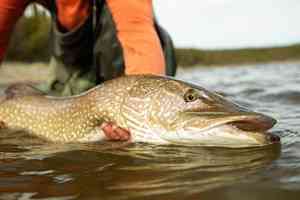


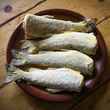

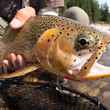




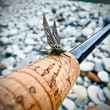
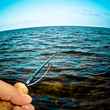



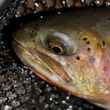


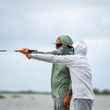



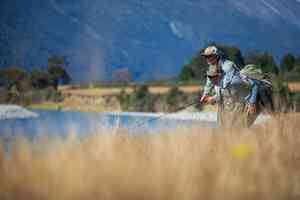
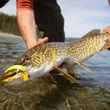







Comments